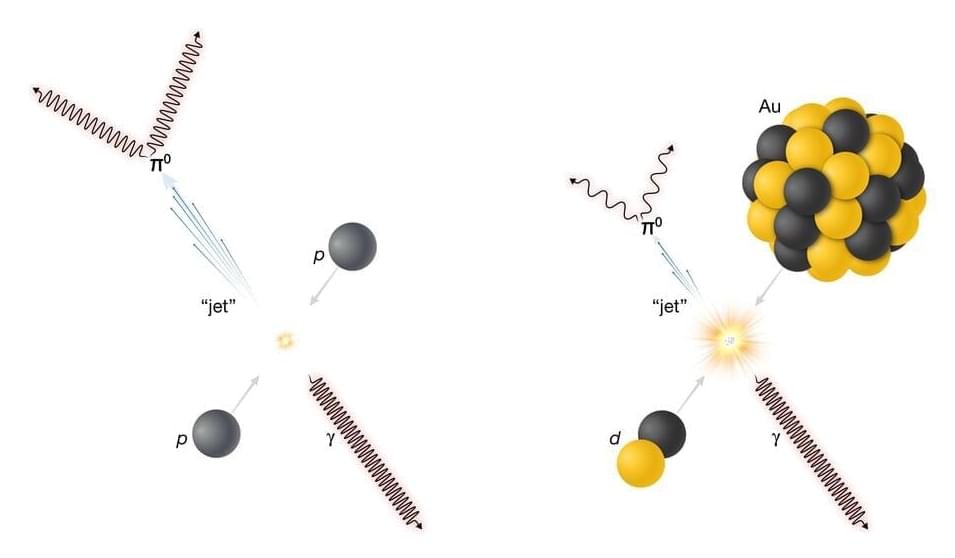A new analysis of data from the PHENIX experiment at the Relativistic Heavy Ion Collider (RHIC) reveals fresh evidence that collisions of even very small nuclei with large ones might create tiny specks of a quark-gluon plasma (QGP). Scientists believe such a substance of free quarks and gluons, the building blocks of protons and neutrons, permeated the universe a fraction of a second after the Big Bang.
RHIC’s energetic smashups of gold ions—the nuclei of gold atoms that have been stripped of their electrons—routinely create a QGP by “melting” these nuclear building blocks so scientists can study the QGP’s properties.
Physicists originally thought that collisions of smaller ions with large ones wouldn’t create a QGP because the small ion wouldn’t deposit enough energy to melt the large ion’s protons and neutrons. But evidence from PHENIX has long suggested that these small collision systems generate particle flow patterns that are consistent with the existence of tiny specks of the primordial soup, the QGP.
